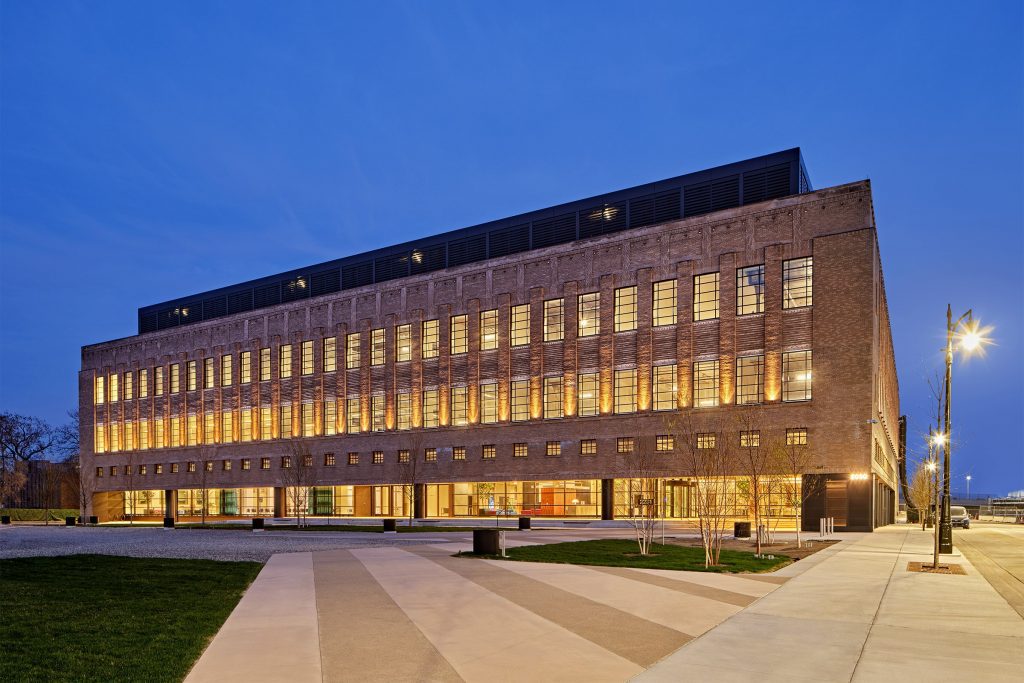A new multi-pronged endeavor is seeking to mold the future of transport inside the renovated shell of an 87-year-old structure in Detroit that has been devastated by fire, tragedy, and more than 30 years of abandonment. Newlab, a technology incubator and coworking space, has relocated to the building. Newlab has moved to Detroit in a way that is intrinsically linked to this structure, with the intention of studying the intersections between transport and society.
Companies that make autonomous wheels, electric bicycles, electric vehicles, and streets designed for autonomous vehicles are now headquartered in what was formerly known as the Book Depository building.


In addition, Ford is renovating that structure in preparation for relocating over a thousand workers there by the beginning of 2024. Across the street in the Book Depository building is Newlab, where startups are creating innovative ways to move people and goods. This area is similar to the scrappier cousin of the established automaker next door.
Michigan Central expects Newlab to provide innovative mobility solutions that meet the demands of modern society through district-level plans and agreements with the city that provide more flexible testing grounds for companies’ technology.
Ford’s Investments
It’s a logical move, given Detroit’s long association with the automobile business. Ford is investing tens of millions of dollars into researching how to electrify and automate automobiles, so this is a real estate investment with complementary advantages. Founder David Belt of Newlab makes this claim as he tours the building’s newly restored ground level, which is bright and modern. You’re not in a regular office block, he explains, and that’s the point.
Newlab, which was founded in 2016 in the Brooklyn Navy Yard, a complex of historic warehouses and factories used during World War II, has found success with this strategy. “It’s very effective to create new concepts in historic structures,” Belt explains. The group at Newlab may now enjoy a lot more space.
There are 84,000 square feet of space available in the Brooklyn Navy Yard. More than 270,000 square feet of space are available at the new Detroit facility. It was built on the architectural foundations of the work of one of the most influential architects of industrial buildings in the 20th century. Josh Sirefman, CEO of Michigan Central, calls the Book Depository “our secret weapon.”
Albert Kahn, a famous industrial architect from the early 20th century, designed the structure. Among his other works, he was responsible for the design of the world’s largest Ford assembly factory. The original purpose of the Book Depository building was as a post office and mail sorting facility, but it has had many other functions over the years.
Ford began investing in 2018
After its time as a post office, the building served as a storage facility for the public schools in Detroit. Its large, dark floors were filled with millions of books and unused classroom materials. The public school system, which was already facing financing difficulties due to the city’s declining population, considered the 1987 fire a wash. No one lived there for over 30 years save for urban explorers and those without other options. An unfortunate individual drowned in the building’s flood-prone basement, and his body was discovered by ice hockey players months later.
The structure was revitalized in 2018 when Ford began investing in the neighborhood. It has recently undergone a spectacular gut restoration by the architecture and design firm Gensler, which included cutting a huge atrium into the building’s second and third floors and flooding the space with natural light through a nearly building-wide skylight. It transformed a vast space once used to store books and machinery into a welcoming, adaptable, and social hub for its patrons. Belt explains, “We wouldn’t have come without that.”
Industrial spaces for prototyping and production, and a large workshop where five-axis robot arms and 3D printers stand alongside decades-old band saws and milling equipment, are all part of the modern office makeover designed by Civilian and implemented by Ghafari. The belt adds that they acquired some of the older tools from closed auto assembly companies in the area.
More private studios and compact offices
There’s more going on here than simple retro coolness. Belt, upon touring the building’s expansive basement with its soaring ceilings, praises Kahn’s work as “incredibly conducive to being able to have a big field of play.” Both the ground level and the basement have direct street access, making them ideal for businesses that specialize in automotive and transportation technology. It’s an unusual sight even in Detroit. In his opinion, “to have multiple floors is kind of a big deal,” Belt says of multi-story buildings.
More private studios and compact offices are being built out on the building’s second and third levels. The majority of the second level is taken up by an expansive open office, with adjustable desks for businesses that may temporarily require space for one, two, or twenty employees as their projects reach different stages of maturity. Full occupancy is expected to be around 1,200 people.
Airspace Link, which works to safely integrate drone activity into the severely regulated and busy airspace above cities, was one of the initial entrants. According to CEO Michael Healander, “We’re basically air traffic control for drones.” The business has set up shop in Newlab and Michigan Central in an effort to convince regulators to lift restrictions on drone flight outside the line of sight of the operator.
It’s difficult but could pay off in medical and law enforcement. Healander said the company transferred an organ from a traffic-slowed ambulance to a hospital. The firm can test drone flight in a crowded area at a municipal transport innovation zone in Michigan Central. Detroit’s riverfront’s closeness to the U.S.-Canadian border attracts the company’s attention in creating the first legal framework for international drone flights and delivery.
Founder Sam Shapiro Says
Grounded is another firm based out of Newlab; they convert electric camper vans into mobile, off-the-grid homes. Founder Sam Shapiro, who is present in this high-ceilinged workstation alongside the first three trucks his company is outfitting, claims that Newlab’s location was so appealing that he abandoned a nearly-signed deal for a warehouse in Austin in favor of relocating to Detroit.
We were quite interested in the architecture itself, he continues. The in-house social scene is equally vibrant. He claims negotiations are underway between his company and another Newlab company to place a joint order for solar panels.
Approximately 15 companies are active in this area, employing a total of about 130 people. Newlab hasn’t had to work hard to fill the remaining slots due to the great demand. “It’s all inbound right now,” explains Garrett Winther, Newlab’s community builder.
According to Sirefman of Michigan Central, Newlab’s emphasis on innovation increases the new district’s potential to create new technologies and methods of mobility. He explains that the key is to “see the big picture” of global problems. They are the greatest there is at what they do.




